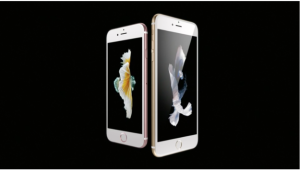The iPhone is a constantly evolving technology. The latest version brings innovations great and small, from brighter selfies to new ways to touch.
Apple unveiled its newest iPhone model Wednesday. The iPhone is a technological marvel, a luxury product, and a cultural icon, and it has been basically since it was invented in 2007.
New iPhone models come out every two years; in the in-between years, Apple releases S versions of those new models. This is an in-between year, so the changes to the phone are pretty minor. Still, it’s informative to look at the different updates to the iPhone 6 that are manifested in Wednesday’s release of the iPhone 6S (and iPhone 6S Plus) — a new layer of manual interaction with the screen, an improved front-facing camera, better video quality, faster download speeds, etc.
Before Wednesday, there were three ways you could interact with an iPhone. You could use voice commands, you could tap, and you could swipe. (Four ways, if you count throwing it across the room because you can’t take a photo because the memory is still full and you have no more apps to delete.)
3D Touch will also allow new iPhone owners to view Live Photos, another new feature announced. With Live Photos, users can see what was happening when a photo was taken simply by pressing firmly on a still phone. The new phone camera captures action 1.5 seconds before and after an image is snapped. “You don’t do anything different — you just take a photo as you alway have,” Apple’s senior vice president of Software Engineering Craig Federighi told the audience assembled at the launch event this morning.
But now, there’s a new way to use your fingers to communicate with an iPhone. The screen of the new iPhone is being made with a new material, one that can basically differentiate between a light tap, a firm press, and a hard jab. Previously, on other devices, Apple has called this feature Force Touch, but because the functionality is so much greater on the iPhone, the company decided to rename it 3D Touch.
3D Touch is kind of like right-clicking on a mouse, or double-tapping on a MacBook keyboard; it opens up secondary interactions with a digital element. 3D Touch adds to the iPhone’s existing Multitouch gesture options (swipe, pinch, tap) with the introduction of new interactions peek and pop. 3D Touch is made possible by Apple’s Taptic Engine, an advancement in haptic technology that Apple actually patented a few years ago.
The iPhone 6 and 6 Plus have 8-megapixel cameras. The iPhone 6S and 6S Plus will have a 12-megapixel camera. The iPhone 6 and 6 Plus shoot video in 1080p. The iPhone 6S and 6S Plus will shoot video in 4K. Thanks to the new iPhone 6S’s new A9 processor chip, browsing speed is faster, battery life is longer, and memory bigger than before.
The iPhone 6S and 6S Plus cost the same as the iPhone 6 models did, starting at $199 and $299 respectively.
See full story on buzzfeed.com

